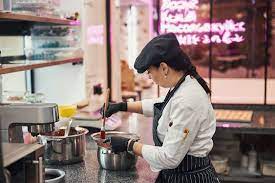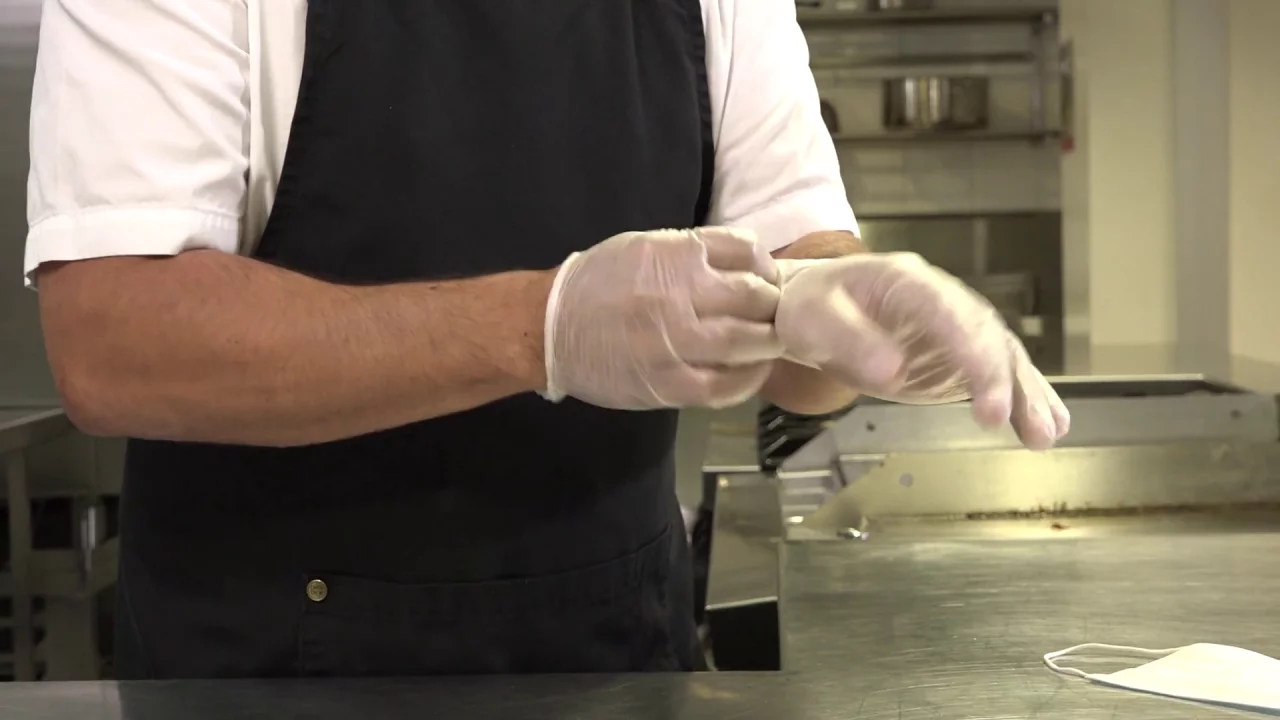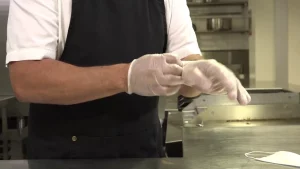Table of Contents
Personal protective equipment (PPE) is an essential aspect of the food service industry. Food service workers, whether working in a restaurant, cafeteria, or other food service setting, are at risk of exposure to various hazards, including burns, cuts, and foodborne illnesses. To protect themselves and their customers, it is important that food service workers use the appropriate PPE to stay safe on the job.

Main Types of PPE for Food Service Workers
There are several types of PPE that food service workers may need to use, depending on the specific tasks and hazards present in their workplace. This may include:
- gloves,
- face masks,
- and goggles or face shields.
It is important to choose the right PPE for the specific tasks and hazards present, and to properly fit and wear it to ensure maximum protection. By using the appropriate PPE, food service workers can help to reduce the risk of injury or illness and ensure a safe and hygienic working environment.
Gloves
Gloves are a common type of personal protective equipment (PPE) used in the food service industry to protect the hands from cuts, burns, and other injuries. They can also help to prevent the spread of foodborne illnesses by providing a barrier between the hands and food. There are several types of gloves that food service workers may use, including:
- Latex gloves: Latex gloves are made from natural rubber and are commonly used in the food service industry. They offer good protection against cuts and abrasions, and are also resistant to many chemicals. However, some people may be allergic to latex, so it is important to consider this when choosing gloves.

- Vinyl gloves: Vinyl gloves are made from synthetic materials and are a good alternative for those with latex allergies. They offer good protection against cuts and abrasions, but may not be as resistant to chemicals as latex gloves.
- Nitrile gloves: Nitrile gloves are also made from synthetic materials and are a popular choice in the food service industry. They offer good protection against cuts, abrasions, and chemicals, and are also resistant to punctures. They are a good option for those with latex allergies.
1. ForPro Disposable Nitrile Gloves, Food Safe

- Nitrile Gloves: Chemical & puncture-resistant nitrile gloves provide a higher level of protection against liquids, gases, & sharp...
- Food Safe Gloves: Non-sterile and powder-free nitrile gloves can be used in restaurants, catering, concession stands, school cafeterias...
- Latex-Free Gloves: Rubber and latex-free nitrile gloves are non-irritating and offer superior strength and comfort - perfect for people...
It is important to choose the right type of gloves for the specific tasks and hazards present in the food service setting. For example, gloves with a textured surface may be useful for tasks that require a good grip, such as handling sharp objects. It is also important to regularly replace gloves to ensure that they remain effective and to prevent the risk of contamination.
Face Masks
Face masks are another important type of personal protective equipment (PPE) for food service workers. They can help to protect the face and respiratory system from various hazards, including burns, cuts, and foodborne illnesses. There are several types of face masks that food service workers may use, including:
- Surgical masks: Surgical masks are designed to protect against the spread of infections, and are commonly worn by healthcare workers. They are made of multiple layers of material and fit snugly over the nose and mouth. Surgical masks are not designed to protect the wearer from inhaling small particles, and are not considered respiratory protection.
- N95 respirators: N95 respirators are designed to protect the wearer from inhaling small particles, including infectious agents. They are made of multiple layers of material and fit snugly over the nose and mouth. N95 respirators have a higher level of filtration than surgical masks, but may be more difficult to breathe through.
2. WAVE ESSENTIALS Blue Disposable Face Masks
Surgical masks may be sufficient for most tasks in a food service setting, but N95 respirators may be necessary in certain situations, such as during a pandemic.
Goggles and Face Shields
Goggles and face shields can help to protect the eyes and face from various hazards, including burns, cuts, and splashes.
Goggles are worn over the eyes and are designed to protect against dust, dirt, and other particles. They may also be used to protect against chemical splashes, depending on the material they are made of. Goggles are typically made of plastic or a similar material and have a snug fit around the eyes to prevent the entry of particles.
3. Uvex Ultra-Spec 2000 Visitor Specs Safety Glasses

- IDEAL VISITOR SPECS: Ultra-Spec Safety Glasses are ideal for use by office workers entering the factory floor and by guests during...
- SAFETY and COMFORT: Wraparound uni-lens design and built-in side shields protect against flying debris, splashes, airborne droplets...
- LONG-LASTING DURABILITY: Made of 100% Polycarbonate material for durability; coatings are permanently bonded to the lens to prevent...
Face shields are worn over the face and provide protection for the entire face, including the eyes, nose, and mouth. They are typically made of clear plastic or a similar material and are held in place with a headband or straps. Face shields are a good option for tasks that may involve the risk of splashes or sprays, such as food preparation or cleaning.
4. TCP Global Safety Face Shields with Pink Glasses Frames

- Pack of 4 Face Shields with Pink Glasses Frames: Sanitary, durable, lightweight, and comfortable premium protective face shields that...
- Full Face Protection while Avoiding the Headband: Safety full-length face shield with a flexible wrap-around design that provides side...
- Ultra-Clear and Anti-Fogging: Face shields provide super clear visibility and have superior optics that let in the maximum amount of...
How to Choose the Right PPE for Food Service Workers?
With the right PPE, your food service workers can experience fewer workplace injuries and illnesses while also safeguarding customers. As you shop around for what fits best in your business setting, here are some key points to remember:
- Type of hazard: Different types of PPE are designed to protect against specific hazards. For example, gloves are used to protect against cuts and abrasions, while face masks are used to protect against respiratory hazards. It is important to choose the right type of PPE for the specific tasks and hazards present in the food service setting.
- Level of protection: Different types of PPE offer different levels of protection. For example, surgical masks offer less protection than N95 respirators. It is important to choose PPE that provides the appropriate level of protection for the specific tasks and hazards present in the food service setting.
- Comfort and fit: PPE that is uncomfortable or poorly fitting may not provide the intended level of protection. It is important to choose PPE that is comfortable and fits properly to ensure maximum protection.
- Cost: PPE can be a significant cost for food service businesses, especially if it needs to be replaced frequently. It is important to consider the cost of PPE when making a selection, while also ensuring that the PPE provides the necessary level of protection.
- Ease of use: PPE that is difficult to use or requires extensive training may not be practical for food service workers. It is important to choose PPE that is easy to use and requires minimal training.
By considering these criteria, food service workers and their employers can ensure that the right PPE is chosen for the specific tasks and hazards present in the food service setting.

